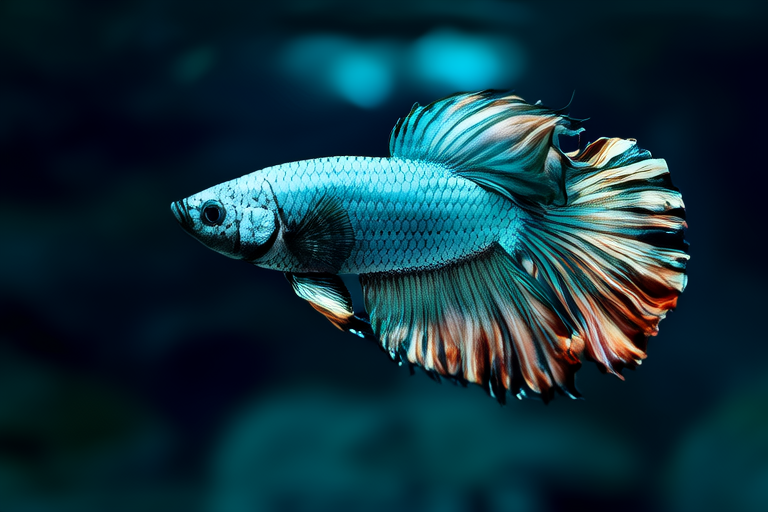Betta Bliss: Unveiling the Majestic World of Betta Fish
Welcome to the mesmerizing world of betta fish, often referred to as Siamese fighting fish due to their aggressive behavior towards other males. These aquatic jewels are known for their vibrant colors and unique personalities, making them a popular choice among aquarium enthusiasts. With a rich history dating back centuries, bettas have captivated the hearts of many, from hobbyists to seasoned aquarists.
The Vibrant Colors and Unique Personalities of Betta Fish
One of the most striking features of betta fish is their dazzling array of colors. From deep blues and vibrant reds to pastel pinks and electric greens, each fish showcases its own distinct hue. This colorful palette is not only visually appealing but also serves a purpose in nature. Male bettas, especially, use their bright colors during courtship displays, aiming to attract potential mates while simultaneously deterring rivals.
Beyond their aesthetic appeal, betta fish are renowned for their individual personalities. Some bettas are shy and reserved, while others are bold and adventurous. They can exhibit behaviors such as flaring their fins, swimming rapidly around the tank, or even displaying signs of aggression. Understanding your betta’s personality can help you create a more personalized and enjoyable aquarium experience.
Natural Habitat vs. Aquarium Settings
In their natural habitat, betta fish are found in slow-moving waters of rice paddies, drainage ditches, and floodplains throughout Southeast Asia. These environments are characterized by warm, shallow waters with low oxygen levels. Bettas have adapted to this challenging setting by developing labyrinth organs that allow them to breathe air directly from the surface. This adaptation makes them uniquely suited for life in poorly oxygenated waters.
When bringing bettas into a home aquarium, it’s important to replicate their natural conditions as closely as possible. While aquariums provide a controlled environment, they differ significantly from the wild. In the wild, bettas face competition for resources and space, which can lead to territorial disputes. In captivity, it’s crucial to ensure that each betta has enough room and minimal stress. A single male betta should be housed alone, as they can become aggressive towards one another. Female bettas, however, can sometimes be kept together if provided with ample space and hiding spots.
Essential Care Tips for Betta Fish
Water Conditions
Maintaining optimal water conditions is vital for the health and longevity of your betta. The ideal temperature range for betta fish is between 76°F and 82°F (24°C to 28°C). Use a reliable thermometer to monitor the temperature and consider investing in a heater if necessary. Regular water changes—about 25% weekly—are recommended to keep the water clean and free of harmful toxins. Test kits can help you monitor pH levels, ammonia, nitrite, and nitrate levels, ensuring a healthy environment.
Diet
Bettas are carnivorous and thrive on a diet rich in protein. High-quality betta pellets or flakes formulated specifically for tropical fish are excellent choices. Supplement their diet with live or frozen foods like bloodworms, brine shrimp, and daphnia. Feeding bettas once or twice daily, offering just enough food that they can consume within a couple of minutes, helps prevent overfeeding and maintains water quality.
Tank Mates Compatibility
While bettas are often sold as community tank inhabitants, it’s important to choose compatible tank mates carefully. Due to their territorial nature, male bettas should not be housed with other males. Females can sometimes coexist if provided with plenty of space and hiding spots. Avoid keeping bettas with fin-nipping species, as their long, flowing fins make them vulnerable. Opt for peaceful companions such as mollies, guppies, or small tetras.
Variety of Tail Types and Finning
Betta fish are celebrated for their diverse array of tail types and finnage, each contributing to their visual appeal. Common tail types include Veil, Crowntail, Halfmoon, Doubletail, and Plakat. Each type has its own distinctive characteristics:
- Veil Tail: Characterized by elongated, flowing fins, giving the betta a graceful appearance.
- Crowntail: Known for its spiky, comb-like fins, providing a unique and striking look.
- Halfmoon: Features a broad, symmetrical tail fin that fans out like a half moon, creating a dramatic effect.
- Doubletail: Displays two separate tail lobes instead of one, adding complexity and beauty to the fish.
- Plakat: Similar to wild-type bettas, with shorter, rounded fins, showcasing a more subdued elegance.
These different tail types and fin shapes not only enhance the betta’s visual appeal but also offer a wide range of options for aquarists to choose from, depending on personal preference and available space.
Enriching the Betta’s Environment
To create a thriving and visually stunning environment for your betta, it’s essential to incorporate appropriate decorations and plants. Not only do these elements add aesthetic value, but they also serve functional purposes, such as providing hiding spots and enhancing water quality.
Decorations
Choose decorations that complement your betta’s color and fin type. Opt for ornaments that are safe and easy to clean, avoiding sharp edges or small parts that could harm your fish. Consider incorporating driftwood, caves, or castles, which can double as hiding spots and resting areas. Decorative bridges or tunnels can also stimulate exploration and provide additional interest.
Plants
Live or artificial plants can significantly enhance your betta’s habitat. Live plants not only improve water quality by absorbing nitrates but also provide natural hiding spots and breeding grounds for beneficial microorganisms. Popular choices include java fern, anubias, and amazon swords. If you prefer artificial plants, opt for high-quality materials that mimic the look of real plants and are durable enough to withstand the betta’s fin movements.
By thoughtfully selecting decorations and plants, you can create a harmonious and enriching environment that meets both your betta’s physical and psychological needs. This approach ensures that your betta remains healthy, active, and vibrant, truly embodying the essence of ‘Betta Bliss.’
